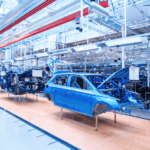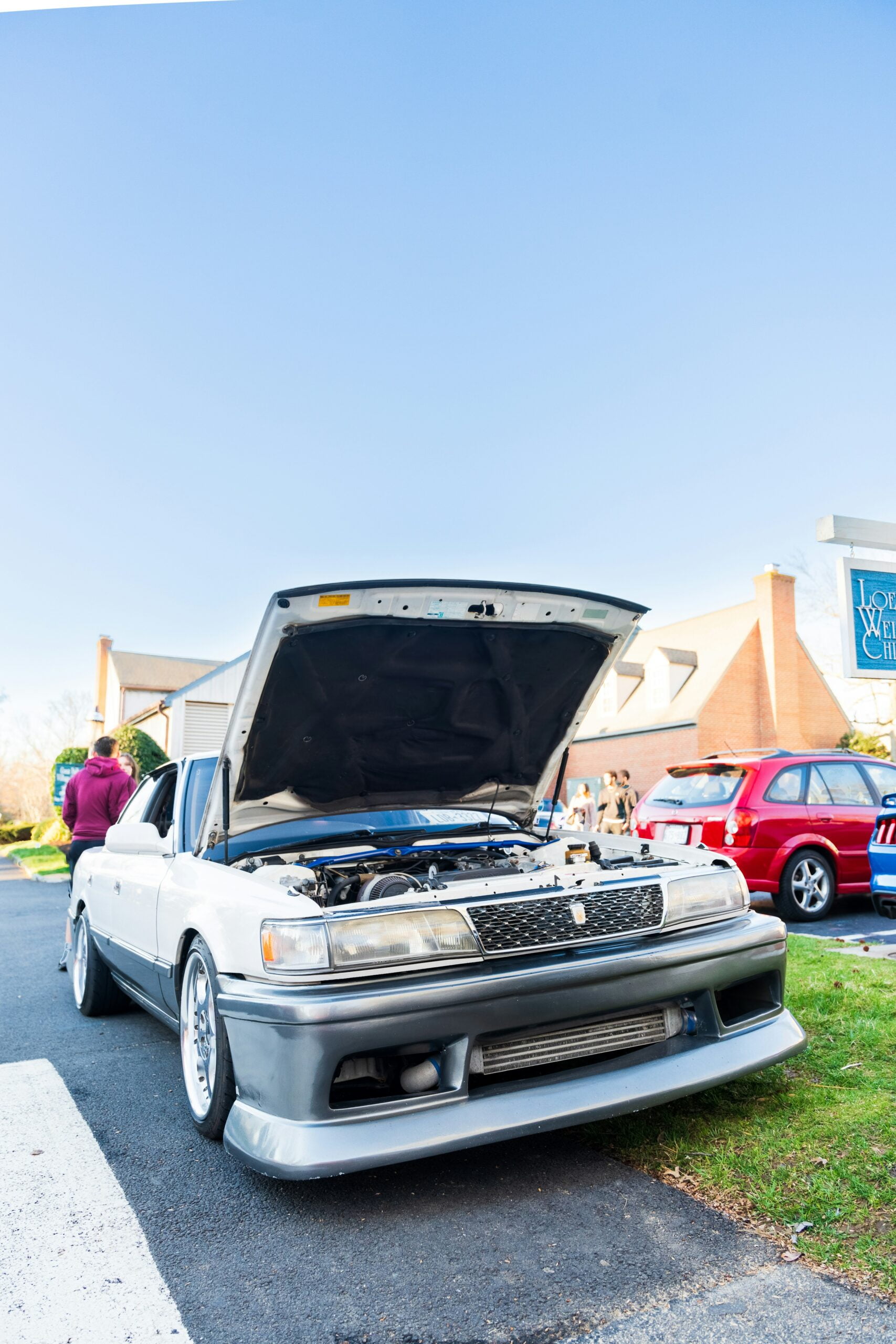

The Challenges and Opportunities for Car and Bike Dealerships in Pakistan
1. Introduction
One of the challenges that car and bike dealerships in Pakistan face is the high import duties and taxes imposed on vehicles. This makes it difficult for dealerships to offer competitive prices to customers. Additionally, the lack of a well-developed public transportation system in many parts of the country means that owning a vehicle is a necessity for many people. However, the high cost of vehicles can be a deterrent for potential buyers.
Another challenge that dealerships face is the limited availability of financing options for customers. While there are some banks and financial institutions that offer car loans, the interest rates are often high and the eligibility criteria are strict. This makes it difficult for many people to afford a vehicle, especially those from low-income backgrounds.
However, despite these challenges, there are also several opportunities for car and bike dealerships in Pakistan. One of the biggest opportunities is the growing demand for electric vehicles (EVs). With the increasing awareness about climate change and the need for sustainable transportation, more and more people are considering switching to EVs. This presents a great opportunity for dealerships to expand their product offerings and cater to this emerging market.
Furthermore, the rise of e-commerce in Pakistan has opened up new avenues for dealerships to reach customers. Many people now prefer to shop online, and this trend extends to the automotive industry as well. By establishing an online presence and offering convenient and transparent purchasing options, dealerships can tap into this growing market and reach a wider customer base.
In addition, the government of Pakistan has introduced several initiatives to promote the local automotive industry. This includes tax incentives for companies that set up manufacturing plants in the country and the development of special economic zones for the automotive sector. These initiatives aim to attract foreign investment and promote the production of vehicles within Pakistan. For car and bike dealerships, this presents an opportunity to collaborate with local manufacturers and offer locally produced vehicles to customers.
In conclusion, while car and bike dealerships in Pakistan face challenges such as high import duties and limited financing options, there are also opportunities for growth and success. By adapting to the changing market trends, exploring new avenues such as electric vehicles and e-commerce, and collaborating with local manufacturers, dealerships can position themselves for long-term success in the automotive industry.
In recent years, the regulatory environment and government policies in Pakistan have undergone significant changes, greatly impacting the automotive industry. One of the key areas where these changes have been observed is in the import regulations for vehicles. The government has imposed strict guidelines and restrictions on the import of vehicles, particularly used cars, in an effort to protect and promote the local automotive manufacturing sector.
Under these regulations, dealerships are required to comply with specific criteria and standards when importing vehicles. This includes ensuring that the vehicles meet certain safety and emission standards, as well as obtaining the necessary certifications and documentation. Failure to meet these requirements can result in penalties and even the seizure of the imported vehicles.
Furthermore, the government has also introduced various tax policies that directly impact the automotive industry. For instance, there are specific taxes levied on the import of vehicles, such as customs duties and sales taxes. These taxes can significantly increase the overall cost of imported vehicles, making them less competitive in the market. Dealerships need to carefully analyze and factor in these taxes when determining the pricing and profitability of their imported vehicles.
In addition to import regulations and taxes, government policies related to licensing and registration also play a crucial role in the automotive industry. Dealerships need to ensure that they have the necessary licenses and permits to operate legally. This includes obtaining dealership licenses, trade licenses, and other relevant permits. Failure to comply with these licensing requirements can result in fines and even the closure of the dealership.
Overall, the regulatory environment and government policies in Pakistan have a significant impact on the operations and profitability of automotive dealerships. Staying updated with the latest regulations, adapting to changes, and ensuring compliance with government policies are essential for the success of any dealership in this dynamic and evolving industry.
2. Economic Factors
Economic factors such as inflation, exchange rates, and interest rates can significantly impact the purchasing power of consumers. Fluctuations in these factors can affect the affordability of vehicles, leading to changes in demand. Car and bike dealerships need to closely monitor economic indicators and adjust their pricing and financing strategies accordingly. This flexibility can help dealerships navigate through challenging economic conditions and seize opportunities when the market is favorable.
Inflation is a key economic factor that affects the prices of goods and services, including vehicles. When inflation is high, the cost of production and raw materials increases, leading to higher prices for cars and bikes. This can make it more difficult for consumers to afford a new vehicle and may result in a decrease in demand.
Exchange rates also play a crucial role in the automotive industry. Fluctuations in exchange rates can impact the cost of importing vehicles and parts. For example, if the local currency weakens against the currency of the country from which the vehicles are imported, the cost of importing will increase. This can lead to higher prices for consumers, reducing the demand for vehicles.
Interest rates are another economic factor that affects the affordability of vehicles. When interest rates are low, it becomes more attractive for consumers to finance a car or bike purchase. Lower interest rates mean lower monthly payments, making it easier for consumers to afford a new vehicle. On the other hand, when interest rates are high, financing a vehicle becomes more expensive, which can deter potential buyers.
To mitigate the impact of economic factors, car and bike dealerships need to stay informed about market trends and economic indicators. By closely monitoring inflation rates, exchange rates, and interest rates, dealerships can adjust their pricing and financing strategies accordingly. For example, during periods of high inflation, dealerships may offer special discounts or promotions to make vehicles more affordable for consumers. Similarly, when interest rates are low, dealerships can advertise attractive financing options to encourage buyers.
Furthermore, dealerships can also take advantage of favorable economic conditions to expand their customer base. When the economy is performing well, with low inflation and stable exchange rates, consumers are more likely to have the purchasing power to buy vehicles. Dealerships can capitalize on this by increasing their marketing efforts, targeting potential buyers, and offering competitive pricing and financing options.
In conclusion, economic factors such as inflation, exchange rates, and interest rates have a significant impact on the automotive industry. Car and bike dealerships need to closely monitor these factors and adjust their strategies accordingly to navigate through challenging economic conditions and seize opportunities when the market is favorable. By staying informed and adaptable, dealerships can ensure their success in a constantly evolving economic landscape.
3. Competition and Market Saturation
The automotive market in Pakistan is highly competitive, with numerous dealerships vying for customers’ attention. This competition is further intensified by the presence of both local and international brands. To stand out from the crowd, dealerships need to differentiate themselves through exceptional customer service, innovative marketing strategies, and a wide range of vehicle options. Building strong relationships with customers and offering personalized experiences can help dealerships gain a competitive edge in the market.
In addition to the intense competition, the Pakistani automotive market is also facing the challenge of market saturation. Over the years, the number of vehicles on the roads has significantly increased, leading to a saturation point where the demand for new vehicles is not growing at the same rate. This saturation is primarily due to the limited infrastructure development, traffic congestion, and the high cost of vehicle ownership.
The saturation of the market poses a significant challenge for dealerships as they need to find new ways to attract customers and increase sales. One strategy that many dealerships are adopting is to focus on the growing demand for electric vehicles (EVs). With the increasing awareness about environmental issues and the government’s initiatives to promote clean energy, there is a rising interest in EVs among consumers.
To tap into this emerging market, dealerships are investing in EV charging infrastructure and expanding their range of electric vehicle offerings. They are also partnering with electric vehicle manufacturers to bring the latest models to the Pakistani market. By positioning themselves as leaders in the EV segment, dealerships can differentiate themselves from their competitors and attract a new segment of environmentally conscious customers.
Furthermore, to combat market saturation, dealerships are exploring new avenues for growth such as offering vehicle leasing and rental services. This allows customers who may not be able to afford the high upfront cost of purchasing a vehicle to still have access to reliable transportation. By providing flexible and affordable options, dealerships can expand their customer base and generate additional revenue streams.
In conclusion, the automotive market in Pakistan is highly competitive, and dealerships face the challenge of market saturation. To stay ahead in this competitive landscape, dealerships need to focus on exceptional customer service, innovative marketing strategies, and a wide range of vehicle options. Additionally, they must adapt to the changing market dynamics by investing in electric vehicles and exploring new avenues for growth. By embracing these strategies, dealerships can thrive in the face of competition and market saturation, ensuring their long-term success in the Pakistani automotive industry.
4. Technological Advancements
The automotive industry is constantly evolving with new technological advancements. From electric vehicles to autonomous driving features, dealerships need to stay abreast of these developments to meet the changing demands of customers. Embracing technology can open up new opportunities for dealerships, such as offering advanced vehicle features, providing digital platforms for customers to explore and purchase vehicles, and enhancing the overall customer experience.
With the rise of electric vehicles, dealerships have the chance to tap into a growing market of environmentally conscious consumers. Electric vehicles not only offer reduced emissions but also lower operating costs for customers. By offering a range of electric vehicle options and investing in the necessary infrastructure, dealerships can attract a new segment of customers who prioritize sustainability.
In addition to electric vehicles, autonomous driving features are another technological advancement that is reshaping the automotive industry. Self-driving cars are no longer a futuristic concept but a reality that is gradually becoming more accessible to the general public. Dealerships that embrace autonomous driving technology can position themselves as leaders in the industry and cater to customers who value convenience and safety.
Furthermore, technology has transformed the way customers interact with dealerships. Digital platforms have become an essential tool for customers to research, compare, and purchase vehicles. Dealerships that offer user-friendly websites and mobile applications can provide customers with a seamless online experience, allowing them to browse inventory, schedule test drives, and even complete the purchase process from the comfort of their own homes.
Moreover, technology can enhance the overall customer experience at dealerships. Virtual reality showrooms, for example, allow customers to explore different vehicle models and configurations without physically being present at the dealership. This immersive experience not only saves time but also enables customers to make more informed decisions. Additionally, advanced customer relationship management (CRM) systems can help dealerships personalize their interactions with customers, providing tailored recommendations and offers based on their preferences and past purchases.
In conclusion, technological advancements in the automotive industry present both challenges and opportunities for dealerships. By embracing electric vehicles, autonomous driving features, and digital platforms, dealerships can attract new customers, enhance the overall customer experience, and stay ahead of the competition. It is crucial for dealerships to continually adapt to these advancements and invest in the necessary resources to thrive in this rapidly changing landscape.
5. Infrastructure and Transportation Challenges
Pakistan faces significant infrastructure and transportation challenges that can have a profound impact on the operations of car and bike dealerships throughout the country. The inadequate road networks, traffic congestion, and limited access to financing options pose considerable obstacles to the growth and development of the automotive industry in Pakistan. However, despite these challenges, the situation also presents a range of opportunities for dealerships to collaborate with both government and private entities to address these issues and find innovative solutions that can benefit the industry as a whole.
One of the major challenges that dealerships face is the inadequate road networks across the country. Many areas suffer from poorly maintained roads that are not suitable for smooth transportation. This not only affects the delivery of vehicles to dealerships but also hampers the overall mobility of customers. In some remote regions, the lack of proper roads makes it nearly impossible for dealerships to establish a presence and cater to potential customers. However, by working closely with the government and other stakeholders, dealerships can advocate for the improvement and expansion of road infrastructure, ensuring better connectivity and accessibility for their customers.
Traffic congestion is another significant challenge that impacts the operations of car and bike dealerships in Pakistan. Major cities like Karachi, Lahore, and Islamabad are notorious for their congested roads, resulting in delays and increased costs for dealerships. The traffic congestion not only affects the timely delivery of vehicles but also makes it difficult for customers to visit dealerships and make purchases. In response to this challenge, dealerships can explore alternative transportation solutions, such as online sales platforms and home delivery services, to minimize the impact of traffic congestion on their business operations.
Furthermore, limited access to financing options is a major hurdle for both dealerships and customers. Many potential buyers in Pakistan face difficulties in securing loans or financing options to purchase vehicles. This limits their ability to make a purchase and directly affects the sales and revenue of dealerships. To overcome this challenge, dealerships can collaborate with financial institutions to develop customized financing solutions that cater to the specific needs of their customers. By offering flexible payment plans and lower interest rates, dealerships can attract more customers and boost their sales.
Despite these challenges, the infrastructure and transportation landscape in Pakistan also present numerous opportunities for dealerships to thrive. By actively engaging with government bodies, dealerships can advocate for infrastructure development projects that prioritize the expansion and improvement of road networks. Additionally, dealerships can explore partnerships with private entities to introduce innovative transportation solutions, such as electric vehicles and ride-sharing platforms, which can address the issue of traffic congestion and reduce the carbon footprint associated with traditional vehicles.
Moreover, the challenges in infrastructure and transportation also provide an opportunity for dealerships to expand their reach to untapped markets. By strategically establishing new showrooms and service centers in areas with limited access to dealerships, they can tap into a previously unexplored customer base. This expansion can be supported by collaborating with local communities and organizations to identify and address the specific transportation needs of these underserved areas.
In conclusion, while Pakistan faces infrastructure and transportation challenges that can impact the operations of car and bike dealerships, these challenges can also serve as opportunities for growth and innovation. By collaborating with government and private entities, dealerships can work towards improving road networks, developing innovative transportation solutions, and expanding their reach to untapped markets. Through these efforts, the automotive industry in Pakistan can overcome its challenges and thrive in the years to come.
6. Changing Consumer Preferences
Consumer preferences and trends are constantly evolving, driven by factors such as changing lifestyles, environmental consciousness, and technological advancements. Car and bike dealerships need to anticipate and adapt to these shifts in order to meet the demands of the market. Offering a diverse range of vehicles, including electric and hybrid options, and providing sustainable and eco-friendly solutions can help dealerships attract and retain customers in this changing landscape.
One of the major factors influencing consumer preferences is the increasing awareness of the environmental impact of traditional vehicles. As concerns about climate change and air pollution continue to grow, more and more consumers are seeking alternative transportation options that are eco-friendly. Electric and hybrid vehicles have gained significant popularity in recent years, as they offer lower emissions and reduced dependence on fossil fuels. By incorporating these vehicles into their inventory, dealerships can tap into this growing market segment and appeal to environmentally conscious consumers.
Moreover, changing lifestyles also play a crucial role in shaping consumer preferences. With the rise of urbanization and congestion in cities, there is a growing demand for smaller, more compact vehicles that are easier to maneuver and park in tight spaces. Additionally, the increasing popularity of ride-sharing services and the sharing economy has led to a shift towards more flexible transportation options. Dealerships can cater to these changing needs by offering vehicles that are designed for urban environments, such as compact cars and electric scooters.
Technological advancements also have a significant impact on consumer preferences. The integration of advanced features and connectivity options in vehicles has become increasingly important for consumers. People now expect their vehicles to be equipped with the latest technology, such as touchscreen infotainment systems, smartphone integration, and advanced safety features. Dealerships need to stay up-to-date with these technological advancements and ensure that their vehicles meet the expectations of tech-savvy consumers.
In conclusion, consumer preferences are constantly evolving, driven by changing lifestyles, environmental consciousness, and technological advancements. Car and bike dealerships need to adapt to these shifts by offering a diverse range of vehicles, including electric and hybrid options, and providing sustainable and eco-friendly solutions. By understanding and catering to the changing needs of consumers, dealerships can stay competitive in this dynamic market.
7. After-Sales Service and Support
Providing exceptional after-sales service and support is crucial for car and bike dealerships to build customer loyalty and trust. This includes offering reliable maintenance and repair services, providing timely spare parts, and ensuring efficient customer support. Dealerships that prioritize customer satisfaction and invest in their after-sales infrastructure have a greater chance of retaining customers and generating positive word-of-mouth referrals.
One of the key aspects of after-sales service is offering reliable maintenance and repair services. Customers rely on dealerships to keep their vehicles in optimal condition, and a dealership that can consistently deliver high-quality maintenance and repair services will earn the trust and loyalty of its customers. This involves having skilled and experienced technicians who are trained to handle various types of repairs and maintenance tasks. Additionally, having state-of-the-art equipment and tools can further enhance the service quality and efficiency.
In addition to maintenance and repair services, providing timely spare parts is another crucial aspect of after-sales support. Customers often require replacement parts for their vehicles, whether it’s due to wear and tear or accidents. A dealership that can promptly provide the necessary spare parts ensures that customers can get their vehicles back on the road quickly. This requires maintaining a well-stocked inventory of commonly needed parts and having a streamlined process for ordering and delivering less common parts.
Efficient customer support is also essential for a dealership’s after-sales service. Customers may have questions or concerns regarding their vehicles, and a responsive and knowledgeable customer support team can address these issues promptly. This includes providing clear and accurate information, assisting with troubleshooting, and resolving any problems or complaints that may arise. A dealership that prioritizes effective communication and provides excellent customer support can significantly enhance the overall ownership experience for its customers.
Investing in after-sales infrastructure is an important step for dealerships looking to provide exceptional service and support. This includes not only hiring and training skilled technicians but also continuously updating and upgrading equipment and tools. Additionally, having a well-organized spare parts management system and implementing efficient customer support processes can further improve the after-sales experience. Dealerships that make these investments demonstrate their commitment to customer satisfaction and position themselves as reliable and trustworthy partners for their customers.
In conclusion, prioritizing after-sales service and support is essential for car and bike dealerships to build customer loyalty and trust. By offering reliable maintenance and repair services, providing timely spare parts, and ensuring efficient customer support, dealerships can enhance the overall ownership experience for their customers. Investing in after-sales infrastructure demonstrates a commitment to customer satisfaction and can lead to long-term customer retention and positive word-of-mouth referrals.
Add a comment Cancel reply
Categories
- automobile (1)
- Automotive (31)
- Automotive Industry (2)
- Automotive Safety (1)
- Car Brands (1)
- Car Buying (1)
- Car Reviews (1)
- Clean Energy (1)
- Marketing (1)
- Motorcycles (1)
- Trade Agreements (1)
- Transportation (2)
- Travel (2)
Recent Posts
About us

Popular Tags
Related posts

Understanding Custom Duties and Taxes Affecting Car and Bike Prices in Pakistan









